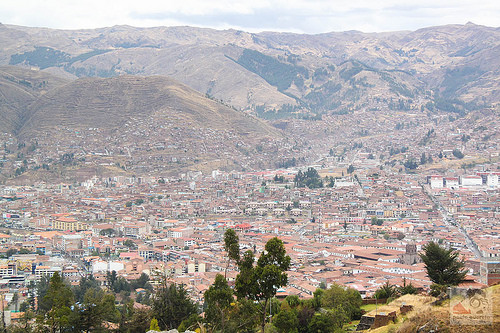Are you thinking about moving to Peru but you don’t know what awaits you? Most people will talk about the warmth of the locals, the unique surf spots, the untouched beauty of this land, and the awe-inspiring historical sites. While all of this is true, Peru also has a few “surprises” that are not as pleasant. Here are five things you should know before moving to Peru.Transportation & Traffic
While you may be prepared for the culture shock when moving to Peru, your first time in the city may be unlike anything you’ve ever experienced before. Lima, the capital, does not have a public transport system, but instead you can hop on any one of the many privately owned buses to reach your destination. Similarly taxis, “micros” (small buses), and combis (minivans) are privately owned and the drivers are often reckless as they try to weave their way through heavy traffic. If your car is stuck in traffic, you can expect to move a few feet before having to stop again, and this pattern will then repeat itself for the next hour or more. When you are travelling by public transport in Lima for the first time, avoid the rush hour traffic if you can (7:30 to 9:00 a.m. and 5:30 to 7:00 p.m.), and also avoid the lunch hour traffic from noon to 1:30 p.m.
Opportunistic Theft
Violent crimes against tourists and other foreigners are very rare, but snatch theft, pickpocketing, and opportunistic theft are common problems. As a foreigner, you will be viewed as an ideal target, so you will need to take precautions to ensure that your belongings are safe and secure, especially when you are travelling around the city. Leave your valuables in your hotel safe-deposit box and carry your money in the front pocket of your pants, not your back pocket. Keep some money as a back-up in another pocket, so that even if you do lose your wallet, you are not stranded. If you must carry a laptop or camera in a specialized carry case, put the case into an old backpack so that it does not draw unnecessary attention.
Tap water
According to the U.S. Department of State Travel, tap water in Peru is not safe to drink. You will need to boil the water for at least 1 to 3 minutes or use a water filter to ensure that your water is safe for drinking. Alternatively, you can buy bottled water. However, do consider the environmental impact of doing this on a regular basis. In addition, if you must buy bottled water, be sure to buy bottled water from a large store, and not from roadside vendors as many reuse mineral water bottles by filling them with tap water and selling them to tourists. Drinking tap water will increase your risk of cholera and typhoid fever which are common illnesses, especially in the cities. You should avoid buying fruit juices and other drinks from street-side vendors as these are generally made with tap water. Similarly, the ice in small bars and establishments is also likely to be made using tap water, and so you should avoid this too.
Toilets and toilet paper
Many toilets do not have toilet seats, and the cold porcelain can be very uncomfortable; the obvious way to improvise would be to use toilet paper as a “cover”, but this is where the next problem crops up – many toilets do not have toilet paper rolls. The simplest way to overcome this problem is to carry a toilet paper roll or at least a pack of pocket tissues with you whenever you go to the bathroom. The drainage system cannot handle toilet paper, and so you will find a bucket in most toilets with instructions to throw your used toilet paper into the bucket. Even if you don’t see printed instructions, you need to follow this system or you risk the embarrassment of a clogged toilet.
Weather
The weather in the highlands of Peru is quite pleasant throughout the year. However, Lima has plenty of cloudy weather with fog and the occasional drizzle, which can make the city seem quite gloomy. The skies are generally overcast for eight months of the year, so if you are someone who loves bright, sunny skies, you need to factor this in before you move to Peru. Even if you are forced to live in the city, you can still plan a weekend escape to nearby cities like Pisco, which are sunny throughout the year. Pisco is a mere 3-hour bus journey from Lima, so if you leave early in the morning, you can spend your day relaxing on one of its beautiful, clean beaches.
Can we improve this article? Something wrong? Let us know in the comments.


